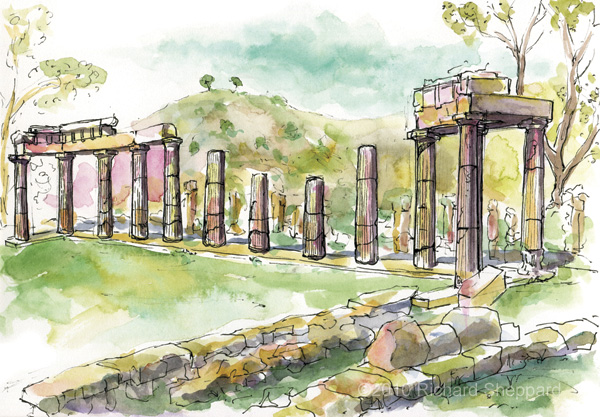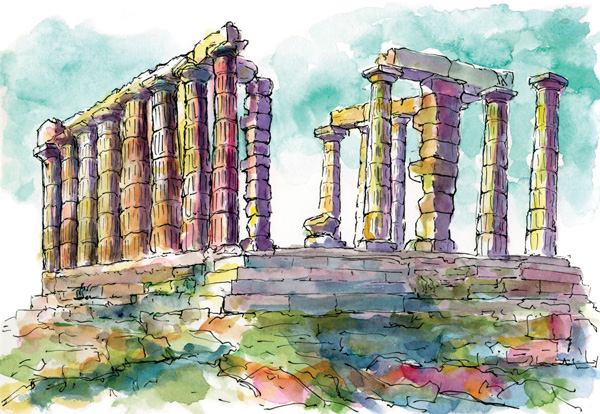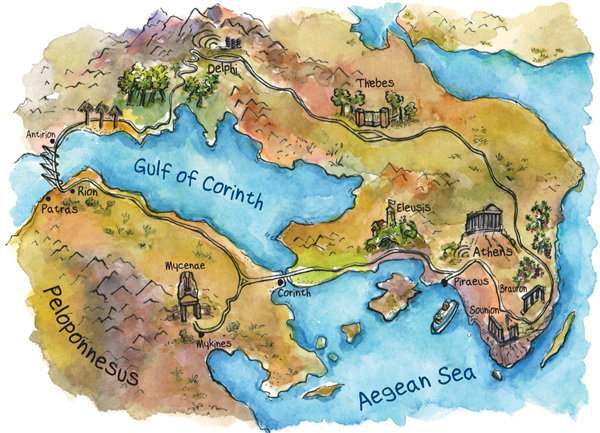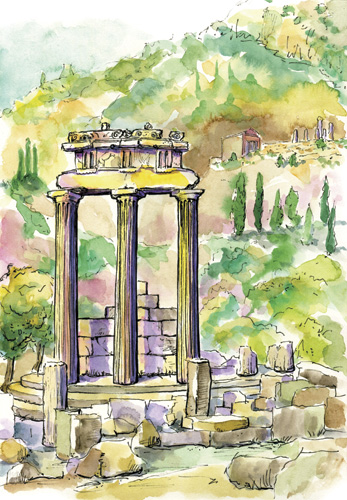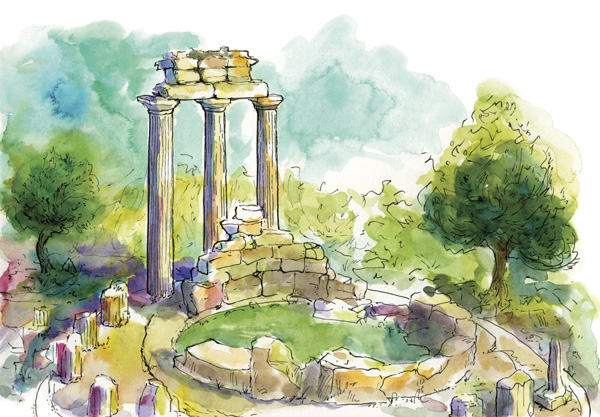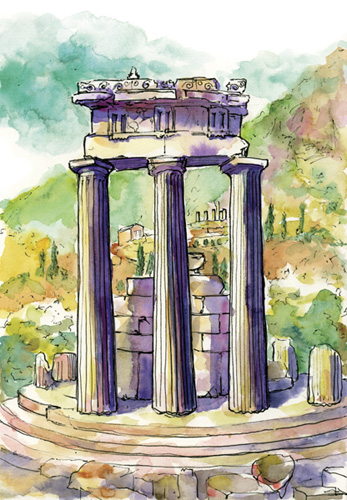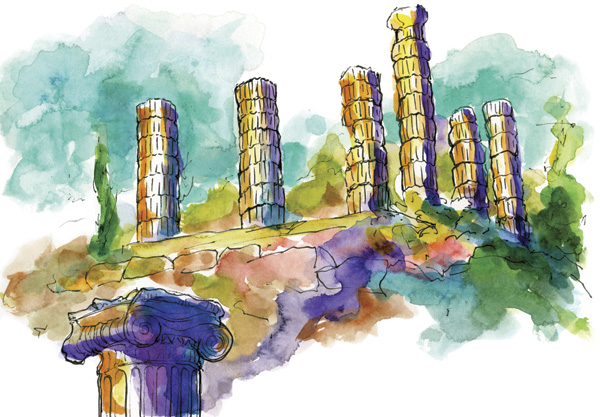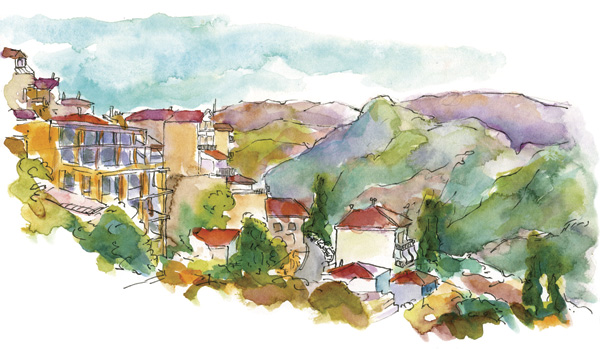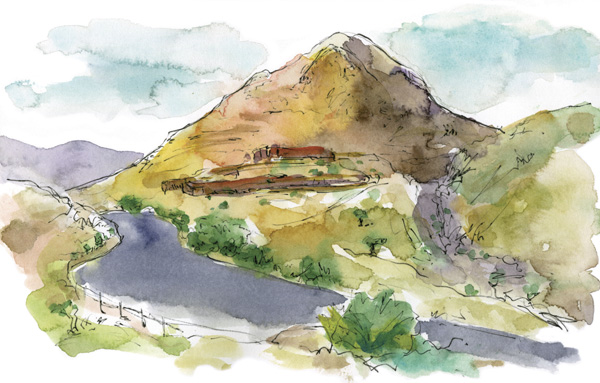 Standing outside Mycenae’s ancient ruins, hands in our pockets and our backs to the wind, we wait for the gate to open. The sky is clear this morning, but I fear the weather might be a nuisance while painting. I’m still tired too. Last night around midnight, a motorcycle raced up and down the street in front of the hotel, blaring its exhaust until I thought the sound would blow out the windows of the hotel. Then a car joined in the fun, and together they raced up and down the otherwise deserted and tranquil street. I was too tired to get up and look out into the darkness, and eventually, once the clatter stopped, I fell back asleep.
Standing outside Mycenae’s ancient ruins, hands in our pockets and our backs to the wind, we wait for the gate to open. The sky is clear this morning, but I fear the weather might be a nuisance while painting. I’m still tired too. Last night around midnight, a motorcycle raced up and down the street in front of the hotel, blaring its exhaust until I thought the sound would blow out the windows of the hotel. Then a car joined in the fun, and together they raced up and down the otherwise deserted and tranquil street. I was too tired to get up and look out into the darkness, and eventually, once the clatter stopped, I fell back asleep.

We pay our fee at Mycenae’s entrance and are immediately confronted with the magnificent stone entryway called the Lion Gate. It was built circa 1250 BC, a few decades before the Trojan War. Mycenae at that time was the kingdom of Agamemnon, the general who led the Greek forces against Troy. He sacrificed his daughter, Iphigeneia, to the goddess Artemis to get favorable winds to sail to Troy, and when he returned home, his wife, Klytemnestra, killed him for it. While he was at his bath, she wrapped him in royal robes and struck him three times with an ax.
At the entrance to Mycenae, two sandstone lions stand above the gate itself. Both lions are headless now, but in antiquity they stood face to face. I position my portable chair beside the walkway. The wind has calmed enough now that I’m ready to get started. I’m choosing to paint the Lion Gate because, with its headless lions, it’s the most legendary and distinguishing aspect of the site. I’m lucky to have brought my watercolor Moleskine sketchbook because its landscape format is perfect to capture both the gate and the walls forming this extended view. In this drawing, I shorten the wall to the right, fitting the whole scene onto the page, including the cypress tree. Tightening the drawing in this way will, I hope, render it visually stronger, and with the help of the tree, balance the weight of the Lion Gate on the left.
